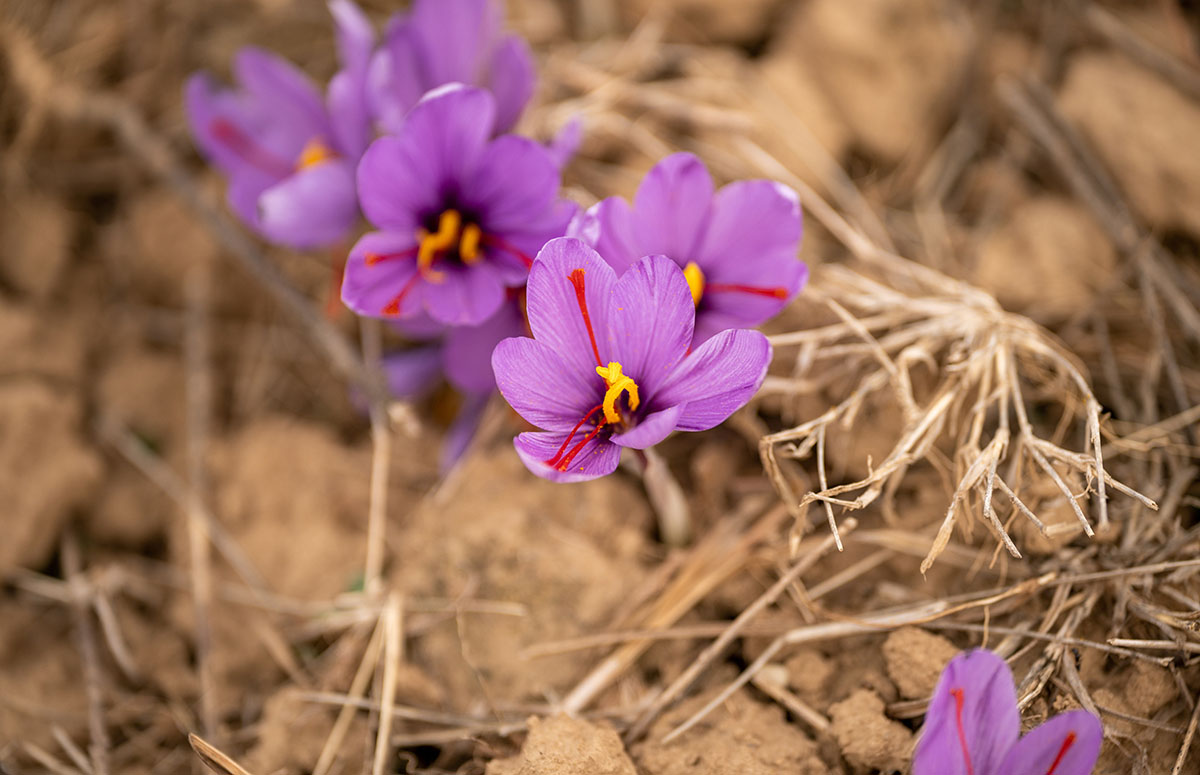
Why Is Saffron So Expensive?
Saffron’s high price comes from the extensive harvesting process, it’s a good thing that you only need a pinch to elevate your meals. Many factors contribute to the price of Saffron and in this post, we will explain everything about the harvesting process, drying process and how to spot the difference between genuine and fake Saffron.
How much does Saffron cost?
Saffron is extremely expensive to buy, but do you know how much you should expect to pay? For just 1g of Saffron, you can expect to pay anywhere up from £5, this spice is quite misunderstood as people don’t understand the factors that contribute to this price.
Saffron’s specific growing needs, including a hot, dry climate and precise planting, combined with the intensive manual labour, drive its high price of £400 to £4,000 per kilogram. The price depends on its quality, origin, and purity. Premium-grade saffron, such as that from Iran or Kashmir, often sits at the higher end of the scale due to its intense colour, aroma, and flavour.
The Harvesting Process of Saffron
The harvesting process is split into 3 stages: initial harvesting, production, and drying. Each process is time-consuming and has to be done extremely carefully, the saffron flowers are delicate and you only use the centre part which is called Negin, these are the threads.
The harvesting process is one of the reasons why Saffron costs so much for such a small amount. Saffron only blooms between October and November so there is only a short period when it’s available for harvest. This is due to the precise temperatures needed to allow it to grow once it’s planted in July, these are between 23-27 degrees. It also becomes more difficult for the harvest as you can only do so before sunlight, this is to avoid sun damage. Add in the fact that each flower only lives for 48 hours, and with this whole process having to be done manually it can become easy to see why it’s so difficult to harvest
Saffron Production
Each Crocus sativus flower must be handpicked because the threads are extremely delicate, so this process cannot be rushed. It’s an incredibly labour-intensive process to produce Saffron. It takes around 70,000 flowers to produce just 450g! Each Saffron flower only produces 3 red stigmas (these are the Saffron threads) so it’s important to work slowly and precisely to cultivate the best parts. Once all the threads have been harvested and separated, it’s then onto the long drying process.
Saffron Drying Time
Once the strands have all been cultivated, they then have to go through a strenuous drying process. Traditionally, the strands are all laid out on a flat surface in a dark, well-ventilated room. They have to reach a certain moisture level before being packaged in airtight containers away from sunlight. If this process is rushed and there is too much moisture in the Saffron, it spoils. This adds time and cost to the process which further drives the price up.
How to spot the difference between Real and Fake Saffron
With its labour-intensive and time-sensitive harvesting process, the demand for Saffron outweighs the supply. To attempt to get around this, some people have started to make fake Saffron where they separate the threads and artificially add colour to give the illusion is the real thing, this can make it very hard to tell the difference between what is fake. Authentic Saffron should have a honey-like aroma with an earthy taste and should be slightly sweet. Fake Saffron has a distinctive bitter taste and doesn’t have a sweet aroma.
An easy test is to place a few stands of Saffron on a wet paper towel. If the colour bleeds and spreads, it’s fake. If the Saffron holds its colour and doesn’t spread, it’s authentic. Another way to test is by heating some warm milk and pouring it into a mug before placing a few strands of Saffron in. Authentic Saffron will release its colour slowly and release a sweet aroma over 10-15 minutes without dissolving. Fake Saffron will dissolve during this process.
Bon Appétit
In the end, saffron’s high price is due to all the work that goes into producing it, from planting and picking to drying those delicate threads. But despite the cost, it’s worth it for the delicious flavour and colour it brings to your dishes. If you’re curious to learn more about saffron, check out our other blog posts to find out about the Health Benefits of Saffron and about Sargol Saffron. And if you’re looking for Saffron, our Sargol Saffron is a great choice for any recipe.
